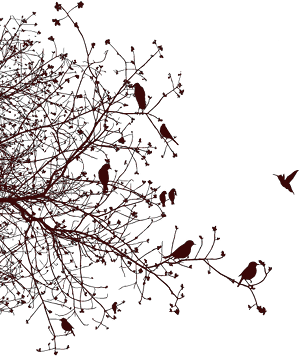The forgotten mothers of the chickens we eat
Posted on April 30, 2014
Chickens have mothers—a fact easy to forget as we ponder our supper-time decision on whether to eat them baked, broiled, roasted or fried. These mothers—given a more detached name, broiler breeders, by the industry—are used to lay the eggs which are incubated and hatched into the chickens we eat. They suffer more than their offspring, but their welfare rarely gets the attention warranted by the grim lives we force upon them.
during any given month in 2013 (source: USDA)
Of the hens used to lay eggs in the US, about 15% are used to lay the eggs which will be hatched into the chickens we eat. During any given month there are over 52 million of these birds—one chicken mother for every six people—languishing in commercial hatcheries in the US.
- USDA, National Agricultural Statistics Service. Chickens and Eggs, 1993-2014. (link, accessed April 29, 2014)
- Counting Animals. A child raised to weigh 500 pounds by age 10? September 2013. (link)
- I. C. de Jong, et al. Effects of restricted feeding on physiological stress parameters in growing broiler breeders. British Poultry Science 43(2), 2002. (link, accessed April 29, 2014)
- V. Sandilands, et al. Behaviour of food restricted broilers during rearing and lay—effects of an alternative feeding method. Physiology and Behavior 85(2), June 2005. (link, accessed April 29, 2014)
- K. L. H. Morrissey, et al. The effect of dietary alterations during rearing on growth, productivity, and behavior in broiler breeder females. Poultry Science 93(2), February 2014. (link, accessed April 29, 2014)
- R. B. D’Eath, et al. ‘Freedom from hunger’ and preventing obesity: the animal welfare implications of reducing food quantity or quality. Animal Behavior 77(2), February 2009. (link, accessed April 29, 2014)
- V. Sandilands, et al. Behaviour and welfare of broiler breeders fed qualitatively restricted diets during rearing: Are there viable alternatives to quantitative restriction? Applied Animal Behavior Science 96(1-2), January 2006. (link, accessed April 29, 2014)
- USDA, Economic Research Service. Food Availability (Per Capita) Data System. February 1, 2014. (link, accessed April 29, 2014)
- P. M. Hocking et al. Welfare assessment of broiler breeders that are food restricted after peak rate of lay. British Poultry Science 43(1), 2002. (link, accessed April 29, 2014)
The chickens we eat are genetically selected to reach a grotesque weight of more than 6 times their natural weight in just one-and-a-half months. They are still babies when we eat them—not yet of reproductive age—but they are so large for their soft bones that many cannot even stand on their legs, let alone walk. The only relief they get from their painful skeletal disorders, lameness, and cracked bones is when they are killed a mere one-and-a-half months after being born. The mothers of these chickens get no such relief; they have to suffer as long as one year and three months in their freakish bodies programmed for accelerated growth. They have to reach reproductive age, and they have to lay the eggs which will be hatched into the similarly freakish chickens we will eat.
A chicken in nature can comfortably live out her natural life span of six to eight years. The chickens we eat, on the other hand, are so unhealthy they cannot even survive one year without succumbing to heart failure, lameness, heat stress, or other consequences of their excessive weight. But, we need these chicken mothers to survive long enough to reach reproductive age and produce eggs—or, we won’t have new chickens to eat next year! So, what do we do? We limit their food intake to only one-third of what they would eat if left to themselves!
Yes, we keep them hungry all the time!
The feed restriction tends to be most severe before their egg-laying phase when these mothers are between one to five months of age. Even adult chickens during the egg-laying period are generally fed only one small meal (about 4-5 ounces of feed) once a day, or twice that amount once every other day.
These chickens have to live through an absurd paradox created by us. We engage in aggressive genetic selection in these chickens for a voracious appetite and fast growth—and then, we keep the mothers hungry all the time so they cannot grow as fast.
The constant state of intense hunger causes them so much stress, anxiety, and frustration that they lose their minds enough to exhibit a behavior called stereotypy, repetitive actions that have no obvious purpose. They will repetitively peck at the same spot at non-food objects including the walls, the floor, the empty feeders, and even litter. In fact, during approximately four months before their egg-laying phase, these hungry and psychologically destroyed birds will spend 47-54% of their time pointlessly pecking at non-food objects and exhibiting stereotypic behavior.
Other than reducing or eliminating our consumption of chickens, the problem of hunger in their mothers is not readily solvable. Intense genetic selection has compromised their health—it is not even clear if allowing them to eat normally and gain a grotesque weight would actually improve their welfare.
who will lay eggs to be hatched into chickens
(hover your mouse on the plot line to see actual numbers)
Thankfully for these mothers, Americans have been eating fewer chickens since about 2006 after decades of rising chicken consumption. Consequently, there has been a somewhat unsteady decline (as shown in the plot above), ignoring the cyclic variations, in the number of mothers used to lay the eggs that will be hatched into the chickens we eat.
But, surely, this decline is too slow for the millions who are, as of this moment, pecking repeatedly at non-food objects in maddening frustration.
Mother’s Day is approaching. Millions of mothers will go out in celebration of motherhood and dine on the offspring of millions of other mothers who are desperately hungry.
py3.9.4 (default, Apr 5 2021, 09:56:39) [GCC 7.5.0]Django(3, 2, 1, 'final', 0)






Comments
Spike
April 30, 2014, 8:19 p.m.
This is incredibly heart-wrenching. I hadn't thought about the chicken mothers before. Another reason to go vegan.
Josh
May 1, 2014, 7:33 p.m.
Really sad and fascinating piece. Thanks for bringing awareness to this hidden issue.
Mikael
May 1, 2014, 7:57 p.m.
Another great post. Thank you Harish!
JD Mumma
May 2, 2014, 12:33 a.m.
Public ignorance and misinformation are the cornerstones of all great human created atrocities and trageDIES!
Thank you for all the work you do to expose the realities and facts!
Kassy
May 2, 2014, 9:59 a.m.
I haven't even considered the mothers before. Incredibly sad. Thank you Harish for this information!
David Coman-Hidy
May 2, 2014, 11:40 a.m.
Another amazing post.
Brian
May 2, 2014, 12:02 p.m.
First time I ever learned about the mothers.
Unny Nambudiripad
May 2, 2014, 2:28 p.m.
Fascinating, Harish. Also pretty depressing. Could you include some positive action items that your readers could take once they are informed about animal cruelty?
Jessika
May 3, 2014, 8:27 p.m.
Thank you, Harish, for speaking about one more invisible issue of animal ag industry!
John Oberg
May 4, 2014, 2 a.m.
So sad and eye-opening. Thanks for your post, Harish.
Helga
May 4, 2014, 6:43 a.m.
The more one learns, the sadder it is. Thank you Harish for exposing yet one more level. Perhaps this will be the one piece of information that will make a chicken-eater finally stop.
Mary Ryan
May 4, 2014, 8:25 a.m.
Thank you for presenting such well documented and irrefutable evidence our our atrocities against these animals.
Harish
May 5, 2014, 11:07 a.m.
Thank you, all, for your encouragement and very kind comments!
peace
May 6, 2014, 6:34 p.m.
And as I understand, the roosters (fathers) have plastic bars shoved through their nostrils (yes, really) to prevent them from accessing the hens' food.
Harish
May 7, 2014, 8:51 a.m.
About the fathers—there are about 8 roosters for every 100 hens in these commercial hatcheries. So, there are over 4 million hungry roosters at any given time in the US who suffer the same feed restrictions as the mothers.
Karen Davis
May 11, 2014, 10:07 a.m.
Thank you for your beautiful and informative tribute to chicken mothers and for describing some of the many, terrible cruelties inflicted on chickens, including dismemberment of their family life as well as of their bodies, in the name of "food" production. There is no end to the cruelty, and now agribusiness researchers are doing even more "heat-stress" experiments on chickens than ever before, to try to create chickens who can withstand global warming. The answer to the nightmare our species has brought to the lives of chickens is to Give a Cluck-Go Vegan - and get others to join you. Thank you. Karen Davis, PhD, President of United Poultry Concerns
Sarah
June 10, 2014, 1:36 p.m.
June 10, 2014 - Heard you on 89.5 this a.m.
Thank you for all the work you are doing. You arm those of us who are going vegan with facts to show it's not just a fad - or phase -but a moral obligation.
As for your feelings about some of the sources of research - whatever you find to that can be used to get the message across is fair game. At least, you are making the lives of the victims of that research count toward ending the plight of their kind.
Again, thank you for your dedication.
carol
April 18, 2015, 6:53 p.m.
I can't believe the cruel treatment of the birds. It seems to me that a poor sick starving chichen or rooster will produce poor sick and starving offspring. So this is what we are eating...eggs
from poor sick starving chickens.
Yuck...yuck yuck. Beans and rice will be on my plate for dinner. Plus the suffering and harm put upon these birds is discusting. Your product is only as good as you care for the animal.
Jerry Cheah
May 25, 2015, 5:42 a.m.
Very Sad. Not to mention those Poor Male Chicks that are put straight into a meat grinder from birth, maybe a day old..Horrific beyond words
Additional comments via Facebook